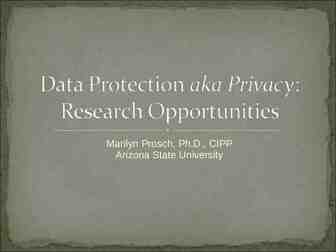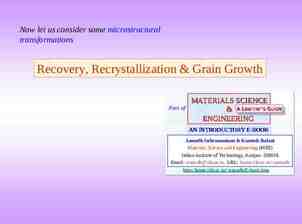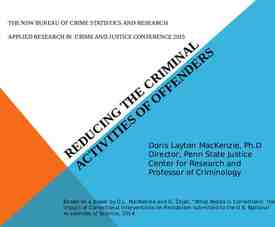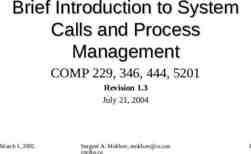Launching a New Nation Chapter 7
69 Slides8.45 MB

Launching a New Nation Chapter 7

Section 1: Washington Leads A New Nation The first President: George Washington Had intended to retire “Should the idea prevail that you would not accept the Presidency, it should prove fatal.to the new government.” Electoral college: unanimous vote Washington President/John Adams Vice President

The First Lady Martha Washington: social first lady, behind the “scenes” Republican Motherhood: a group that encouraged the involvement of women in this new nation.become active.Abigail Adams, Judith Sargent Murray Teaching importance of being a citizen More opportunities for women More education for women Perhaps, the first women’s movement Too soon country not ready, men not ready, women not ready

Republican Motherhood

Picture Republican Motherhood

Organizing the Government Policies/Procedures How to begin? Where to start? “The first of everything in our situation will serve to establish precedent” A need for advisors: Presidential cabinet Secretary of State: Thomas Jefferson Secretary of Treasury: Alexander Hamilton Secretary of War: Henry Knox Postmaster General: Samuel Osgood

Federal Judiciary Judiciary Act of 1789: created a FEDERAL court system: three tier Supreme Court Circuit Courts District Courts Judges appointed by President, approved by Senate 'Gentlemen: I have always been persuaded that the stability and success of the national government, and consequently the happiness of the people of the United States, would depend, in a considerable degree, on the interpretation of its laws.

American Expectations High expectations Improved trade strong economy Limited government yet government protection Issue: How to become ONE UNITED? United States already diverse interest .farmers, merchants, manufacturers Each wanted government protection BUT AS IT BEST SUITED THEM

NEW YORK CITY: A SYMBOL New York City: first capital of US “Spirit of the Nation”: growth, strong economy, sense of energy, up and moving 1792: Wall Street: agreement signed: foundation for New York Stock Exchange another image New York City: potential of a new nation

Objective: To examine how the new U.S. government began. Do Now: What problems did our nation face after the ratification of the Constitution? Early American Problems I. People were more loyal to their state than to the country. II. People questioned the Constitution. (since the Articles of Confederation didn’t work) III. People worried about the British and the French. IV. The nation was severely in debt.

Organizing a New Government Audio – The President’s March (1789) In 1789, George Washington was inaugurated as the nation’s first President. John Adams was the first Vice-President.

New York City was the first capital of the U.S. Federal Hall, seen here in 1789, was originally constructed as a City Hall for New York in 1699.

Oil painting of George Washington’s first inauguration by Ramon de Elorriaga from about 1899

Federal Hall, New York City

Rotunda, Federal Hall, New York City

Washington appointed four men to his first Cabinet. Secretary of State Thomas Jefferson Secretary of the Treasury Alexander Hamilton Postmaster General Samuel Osgood Secretary of War Henry Knox

President Obama’s Cabinet The Cabinet includes the Vice President and the heads of 15 executive departments — the Secretaries of Agriculture, Commerce, Defense, Education, Energy, Health and Human Services, Homeland Security, Housing and Urban Development, Interior, Labor, State, Transportation, Treasury, and Veterans Affairs, as well as the Attorney General. The following positions have the status of Cabinet-rank: White House Chief of Staff, Environmental Protection Agency, Office of Management & Budget, United States Trade Representative, United States Ambassador to the United Nations, Council of Economic Advisers

The Federal Court System In 1789, Congress passed the Judiciary Act. Supreme Court Circuit Court District Court

The Supreme Court John Jay was named the first Chief Justice of the Supreme Court in 1789. Today, the Supreme Court consists of one Chief Justice, and eight Associate Justices. Chief Justice John Jay

John Roberts is the current Chief Justice.

Current Supreme Court (top row, left to right) Sonia Sotomayor, Stephen Breyer, Samuel Alito and Elena Kagan (bottom row, left to right) Clarence Thomas, Antonin Scalia, Chief Justice John Roberts, Anthony Kennedy and Ruth Bader Ginsburg

Section 2: Hamilton and National Finances Alexander Hamilton: Secretary of Treasury Issue: National Debt US new country How could they possibly repay the debt 11.7 million to foreign countries 40.4 million to US citizens Taxes and bonds: The only two ways Bonds: certificates sold by government and then bought back later for a higher price Here comes the speculators Hamilton’s plan: pay foreign debt NOW and gradually repay the value of the bonds

Finances Jefferson disagrees: not fair to those who had already sold their bonds at a lower price States debts: 25million Hamilton: federal government should pay 21.5 million of the debt Southern states: NO many had already repaid their debts “Worm on the hook” move the national capital .Philadelphia until 1791 and then permanently to Washington DC on Potomac River

Jefferson Opposes Hamilton Differing views about democracy: Who should hold the power? Federal government or states? Hamilton: Strong federal government Jefferson: States should retain their power Seeds of political parties**** Economic differences: Hamilton: manufacturing, trade, protective tariffs Jefferson: agrarian society, farming “Our governments will remain virtuous for many centuries; as long as they are chiefly agricultural.” North vs South

A National Bank Hamilton: Need for a National Bank 1. Safe deposit of government’s money 2. Bank would make loans to government/business 3. National mint: coining of money Charter: 20 years/must be renewed States should create state banks Jefferson/Madison: too much power to federal government/Constitution does not allow a federal bank Hamilton: Article I, Section 8, Clause 18: Elastic Clause Hamilton: Loose constructionist Jefferson: Strict constructionist Bank of the United States: 1791

Objective: To analyze the importance of Hamilton’s economic plan. Do Now: After becoming Secretary of the Treasury, Alexander Hamilton faced a nation in severe debt. Why was the U.S. in such debt? Alexander Hamilton, first Secretary of the Treasury

Hamilton and the National Debt The U.S. was in debt. Foreign debt – money owed to foreign nations such as Spain and France Domestic debt – money owed to American citizens The U.S. had borrowed money from its citizens in order to pay for the Revolutionary War through the sale of bonds. Many citizens thought that the government would never be able to pay back their debt. Therefore, they sold their bonds to speculators at a loss.

Hamilton’s Economic Plan Alexander Hamilton wanted to restore people’s faith in the U.S. economy by doing the following: pay back all federal and state bonds combine all state and federal debts into one huge national debt Southerners such as James Madison hated this plan because: most Southern states had already paid their debts most speculators, who became rich, lived in the North

Hamilton’s Compromise The South agreed to The North agreed to allow the federal government to take over the debts of the northern states. move the capital of the U.S. to the South. (Washington, D.C.)

Objective: To analyze the differences between the first political parties. Alexander Hamilton Federalists Thomas Jefferson Democratic - Republicans

Hamilton and Jefferson: Differing Views Alexander Hamilton Thomas Jefferson Favored trade, manufacturing and cities Favored farmers and rural communities Believed that the federal government should have more power than the states Believed that states should have more power than the federal government (state’s rights) Believed in a loose interpretation of the Constitution Believed in a strict interpretation of the Constitution was pro-British was pro-French

First Political Parties led by Alexander Hamilton led by Thomas Jefferson strong state governments led by the “common man” strong central government led by industry and the wealthy emphasis on manufacturing, emphasis on agriculture “Cultivators of the earth are shipping, and trade the most valuable citizens.” – Thomas Jefferson loose interpretation of strict interpretation of the the Constitution Constitution favored the national bank opposed the national bank favored protective tariffs opposed protective tariffs pro-British pro-French

The Providential Detection 1797-1800. Thomas Jefferson kneels before the altar of Gallic despotism as God and an American eagle attempt to prevent him from destroying the Constitution. Jefferson's alleged attack on George Washington and John Adams in the form of a letter to Philip Mazzei falls from his pocket. Jefferson is supported by Satan, the writings of Thomas Paine, and the French philosophers.

Am I a Federalist or a Republican? 1. Francois Goulet 4. Hans Gruber Farmer from Georgia German immigrant 5th grade education Pennsylvania farmer 2. Brandon Smith 5. Sally Moore Lawyer from Boston, MA Mother of five College graduate Employee of a Massachusetts textile mill 3. John Marshall 6. James Prescott Virginia planter Banker from Delaware College graduate Member of the Delaware state legislature Future Chief Justice of the Supreme Court 7. Mary Worthington Believed that the judicial branch was too weak Sells mainly European products Merchant from South Carolina

Am I a Federalist or a Republican? 1.Francois Goulet Republican Farmer from Georgia 5th grade education 2. Brandon Smith Lawyer from Boston, MA College graduate Federalist

Am I a Federalist or a Republican? 3. John Marshall Federalist Virginia planter College graduate Future Chief Justice of the Supreme Court Believed that the judicial branch was too weak 4. Hans Gruber German immigrant Pennsylvania farmer Republican

Am I a Federalist or a Republican? 5. Sally Moore Federalist Mother of five Employee of a Massachusetts textile mill 6. James Prescott Banker from Delaware Member of the Delaware state legislature Republican

Am I a Federalist or a Republican? 7. Mary Worthington Merchant from South Carolina Sells mainly European products Republican

Section 3: Challenges for the New Nation French Revolution: 1789: US had served as a model, rebellion against the king, wanted a republican government A republican government is one in which the political authority comes from the people. In the United States, power is given to the government by its citizens as written in the U.S. Constitution and through its elected representatives. Americans take side support or not to support OH NO France and Great Britain go to war Who should US support? Great Britain? France? Neutral? Neutrality Proclamation: “The duty and interest of the United States require that they should with sincerity and good faith adopt and pursue a conduct friendly and impartial towards the belligerent powers.” Disagreement! Did Washington have the power to issue such a statement?

The French Question Edmond Genet: French representative to US.ambassador .tried to persuade American sailors to help French Privateers: private ships hired by a country to attack its enemies. Washington told Genet he was “out of line” Jefferson strongly disagreed with policy of neutrality US had an obligation to help the French Hamilton was US to help the British a strong trading partner question of economics

Jay’s Treaty Problem British were seizing American ships. Washington sent John Jay to Great Britain to work out a compromise neither country wanted another war Jay’s Treaty A. British would pay damages for seized ships B. British would abandon forts on northwestern frontier US would pay debt owed to Great Britain Treaty very controversial best that could be done Ratified by the Senate

Pinckney’s Treaty Spain becomes a problem: closed the port of New Orleans to all American trade Thomas Pinckney wad sent to negotiate a treaty with Spain A. Reopen New Orleans to American trade B. Give US right of deposit: allow US to transfer goods without paying a fee Pinckney Treaty a. Border between US and Florida: 31 N Latitude b. Reopen New Orleans for trade c. US given right of deposit US gets what it wants

Conflict in the Northwest Territory Where is the Northwest Territory in 1790? THE LURE OF LAND: American settlers moving into Northwest Territory: Indian occupation: Conflict General Anthony Wayne: Battle of Fallen Timbers Treaty of Greenville: A. US gets Indian lands in Northwest Territory B. Safety of US citizens guaranteed C. Indians received 20,000 in GOODS? Once again US gets what it wants and someone expense!

The Whiskey Rebellion Congress passed a TAX on American made whiskey. Hamilton’s plan to reduce the debt How far could federal government dictate policy over the states? People in Western States (western Pennsylvania) felt tax targeted them .corn into whiskey they made it so they should keep the benefits ( ) Washington issued proclamation: OBEY THE LAW Whiskey Rebellion: protest turn violent a challenge to federal authority Washington: Constitution is law of the land Congress has the DELEGATED power to tax Washington HIMSELF led military action to stop rebellion New role as Commander-in-Chief Rebellion ended without a fight

Objective: To examine the formation of the national bank, the tariff proposal, and the Whiskey Rebellion. Do Now: Why were most Southerners against Alexander Hamilton’s economic plan? 1) Most Southern states had already paid their debts. 2) When bondholders were paid back, it benefited Northern speculators at the expense of Southerners.

Strengthening the Economy At the request of Alexander Hamilton, Congress passed a bill in 1791 setting up a national banking system. The Bank of the U.S. was able to: - print paper money - use paper money to pay its bills - make loans to farmers and businesses

First Bank of the United States, Philadelphia, PA

Tariff Proposal Hamilton proposed that Congress pass a tariff on all imported goods. Tariff – tax on imported goods According to the artist, reducing tariffs, or import taxes, would reduce people’s salaries. How is this possible? Judge, June 29, 1912 The idea is that reducing tariffs would cause people to buy more imported goods. In order to compete, domestic companies would have to lower their prices, hurting their ability to make a profit. As a result, companies then cut

The benefits of tariffs: they raise money for the government they help Americans keep their jobs foreign goods are made more expensive people buy more U.S. goods

Other Types of Taxes Sales tax – a tax charged at the point of purchase for certain goods and services Retail Price: 271.99 at Best Buy I-Pod Touch 32 GB Memphis, TN Sales Tax 9.45% (for example) X Retail Price: 271.99 Sales Tax: 25.70 Total Price 297.69 Q: How much will the I-Pod cost in total? 271. 99 100 X 100 9.45 100 2,570.3 0 100 100 2,570 . 30 X 25.70 (sales tax)

Other Types of Taxes Excise tax – a tax not directly applied by the government. The producer or merchant is charged a tax who then pays the government. Q: If this man is paying 3.00 per gallon and he pumps 10 gallons, how much will it cost him? Q: So, did he pay any A: 30.00 taxes on his purchase? A: Yes! He paid an excise tax, which was already included in the price of the gasoline. It is up to the gas station owner to send the tax money to the government.

Other Types of Taxes Excise tax – a tax not directly applied by the government. The producer or merchant is charged a tax who then pays the government. The state excise tax on gasoline is 21 cents per gallon in Tennessee . Q: Therefore, if he spent 30.00 on 10 gallons of gas, how much did he pay in taxes? A: .21 X 10 2.10

Why would farmers Whiskey be mad Rebellion about a tax on liquor? In 1791, Congress taxed all liquor made and The corn that we grow is used to sold in the U.S. make whiskey. If whiskey is taxed, the price will go up and less people will buy it. Liquor producers won’t have to buy so much corn from us. Therefore, farmers like us will lose a lot of money because of this liquor tax!

Thousands of farmers rebelled against the tax. "Famous whiskey insurrection in Pennsylvania", an illustration from Our first century: being a popular descriptive portraiture of the one hundred great and memorable events of perpetual interest in the history of our country by R. M. Devens (Springfield, Mass, 1882).

Picture of the James Miller House where, in 1794, the first gunshots of the Whiskey Rebellion were fired. Today, the homestead is listed on the National Register of Historic Places.

Pres. Washington sent about 13,000 members of state militias to restore order. The painting depicts George Washington and his troops near Fort Cumberland, Maryland, before their march to suppress the Whiskey Rebellion in western Pennsylvania.

".if the laws are to be so trampled upon with impunity, and a minority.is to dictate to the majority, there is an end put at one stroke to republican government.for some other man or society may dislike another law and oppose it with equal propriety until all laws are prostrate, and everyone will carve for himself." - George Washington's observation about the Whiskey Rebellion * The Whiskey Rebellion proved to Americans that the new government would act firmly in times of crisis.

Washington Says Farewell 1796: Washington decides not to run for a third term: sets a precedent until FDR: 22nd. Amendment Warnings: A. Entangling alliances with foreign countries B. Political parties: need for political unity C. Too much debt is not good Strength of the nation is its PEOPLE!

John Adam’s Presidency Presidential election 1796: formation of political parties/factions Federalist Party: Hamilton: strong federal government/support business/trade/merchants Federalist nominate: John Adams/Thomas Pinckney Democratic-Republican Party: Jefferson and Madison/limit power of federal government/more states’ rights/nominate Thomas Jefferson/Aaron Burr Taking sides A. Business/merchants in cities favored Federalists.Where were most of the cities? B. Farmers in remote areas favored Democratic-Republicans.Where were most of the farmers? ADAMS WINS THE ELECTION OF 1796 but who was Vice-President? Amendment 12

President Adams and the XYZ Affair Adams follows Washington big shoes to fill has to earn respect Qualities: hard-working, honest, intelligence, civic leader Goal: reestablish a working relationship with France Need to protect American shipping French foreign minister, Talleyrand, would not speak to US representatives THREE French agents told US representatives that Talleyrand would only talk them when paid 250,000 BRIBE Plus French government wanted a loan of 12million Three agents X,Y,Z became known as XYZ Affair “Millions for defense, but not one cent for tribute!” United States not happy with France.War?

Leaning toward war or NOT Adams reacts: increase the naval fleet of ships and called for a “standing army” Congress agrees Adams hoping to avoid war Federalist not happy with Adams his own party American and French fighting in the Caribbean war still avoided

Alien and Sedition Acts Federalist favored war Democratic Republicans favored France Name calling: “democrats, mobocrats, and all other kinds of rats.” 1798: Alien and Sedition Acts passed: series of acts.How did this act get passed? Sedition Act: forbade anyone from publishing or voicing criticism of the government What happened to Amendment 1? Madison and Jefferson challenged power of the federal government wrote the Kentucky and Virginia Resolutions Alien and Sedition Acts unconstitutional, federal government could not interfere in STATE affairs FEDERAL GOVERNMENT VS STATE GOVERNMENTS WHO IS DRIVING THIS CAR?

Objective: To examine the XYZ Affair and the causes and effects of the Alien and Sedition Acts. British satire of Franco-American relations after the XYZ Affair in May of 1798; 5 Frenchmen plunder female "America", while six figures representing other European countries look on. John Bull sits laughing on "Shakespeare's Cliff.“ June 1, 1798

The XYZ Affair The U.S. sent three people, Charles Pinckney, Elbridge Gerry, and John Marshall, to France to work on a peace settlement. The three French officials, who became known as X, Y, and Z, demanded a bribe and a loan for France. Angered and insulted, the Americans refused.

"Millions for defense, but not one cent for tribute." The cartoon below depicts a five-headed monster, representing the Directory that ruled France in 1797, demanding payment of a bribe from the three American representatives.

What are the definitions of the following key terms? alien - a foreigner sedition - stirring up a rebellion against a government deport - to expel, or kick out Alien and Sedition Acts (1798) – Federalist laws intended to stop Democratic-Republicans from gaining power.

Alien Act (1798) allowed the President to deport any alien considered dangerous to the country. The number of years an alien had to wait to become a U.S. citizen increased from 5 to 14 years. These laws helped stop immigrants from voting for the Democratic-Republicans.

Sedition Act (1798) Anyone found guilty of sedition could be fined and sent to prison. Yo, that’s wack! The law was aimed at Democratic-Republican newspapers. And illegal, too!

Kentucky and Virginia Resolutions Thomas Jefferson claimed that the Alien and Sedition Acts were unconstitutional. KY and VA claimed that states had the right to nullify any federal law they believed to be unconstitutional. (state’s rights) Nullify - to cancel The Federalists believed that only the Supreme Court could declare a law unconstitutional. Video Summary (4:47)






